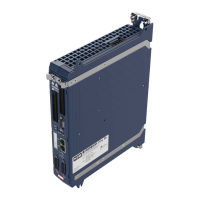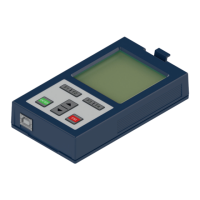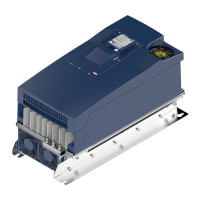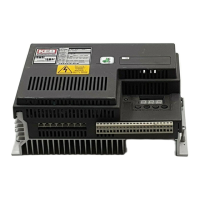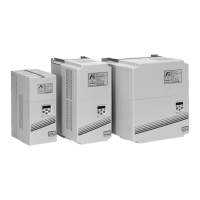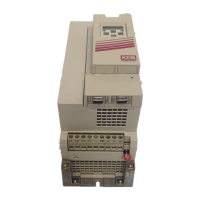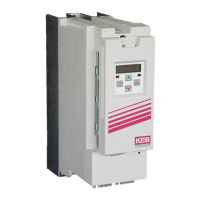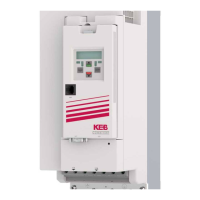By writing on any parameters (e.g. ec14, ec16, ec28, ec29, ec32, ec35), parts of
the initialization and encoder detection are executed once again, depending on the
encoder to be evaluated.
The actual position is then set to the same value as after switching on, e.g. for non-
absolute encoders (TTL, HTL or sine/cosine) to 0.
For encoders that have or could have a zero signal or reference marks, the recog-
nised encoder type goes to 1 "encoder identification running" after switching on.
Here the differences:
➢ Encoder type with zero signal (ec16)
If an encoder type with zero signal is set, the encoder identification is active until
the encoder has passed at least one complete revolution with two zero signals. In
this case, the passed zero signals and the covered periods per revolutions are
monitored and checked with the setting in ec29.
Then the encoder identification is completed and either the recognized encoder
type is displayed or an error message is triggered if one of the checks has failed.
Now the position of the zero signal is also available in ec31.
As long as no second zero signal is passed or always only the same one, the rec-
ognised encoder type ec17 remains at 1 "encoder identification running". But apart
from this display, this has no further effects. All monitoring is already running.
An error is triggered if no zero signal has been passed after three revolutions. How
many increments are regarded as revolution is depending on the setting in ec29
periods per revolution.
Example:
If the increments per revolution of an encoder is 1024, but 2048 pulses per revolu-
tion are adjusted in ec29, the error is triggered after 3 * 2048 pulses = 6 revolutions
(3 * 2048 / 1024).
➢ Encoder type without zero signal (ec16)
If a zero signal is detected, an encoder with a zero signal is displayed in the de-
tected encoder type, but there is no further evaluation.
The detection of a zero signal here only means that the zero signal input of the en-
coder evaluation is in any manner connected
If, for example, "TTL without zero signal" is adjusted as encoder type in ec16 and a
SSI data signal is connected to the zero signal input, an encoder with zero signal is
displayed in ec17 detected encoder type.
Whether the detected signal is actually a zero signal can be checked by activating
an encoder type with zero signal.
During the encoder identification, the described checks (in the previous item) of the
zero signal are executed then.
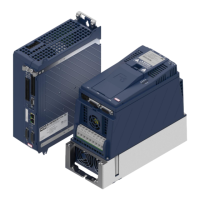
